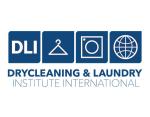CHICAGO — Before small- to mid-sized companies can solve their labor issues, they first have to uncover the reasons behind the issues in the first place. By understanding the roots of the causes, drycleaning owners and others can put the right solutions into place to ease this challenging element of operating a business.
This was the message of Dick Finnegan in his webinar, “Five Turnover-Cutting Steps You’re Not Doing Today,” hosted by the Society for Human Resources Management (SHRM). Finnegan, the CEO of C-Suite Analytics, has worked to solve turnover for organizations as diverse as African gold mines, the CIA and multi-national corporations in China, as well as companies in the United States.
Where Are the Workers?
Finnegan presented data from the U.S. Bureau of Labor Statistics that showed how many people voluntarily quit their job, starting at 2009 as the country was pulling out of 2008’s Great Recession.
In 2009, about 16% of workers quit their jobs during the year, and that number started a steady climb. “The more the economy grew, the more people quit,” Finnegan says. “We got to a high point in 2019, at 28%. The economists said, ‘This can’t get any higher. If it does, it’ll really hurt the economy.’”
And then, the pandemic struck.
In 2020, the percentage of people that voluntarily quit their jobs dipped to just under 25%, “but then it took off again,” Finnegan says, with the high point being 35% in 2021 before dipping to just above 30% in 2022.
The second factor of the labor shortage comes when looking at data supplied by the Bureau that focused on job openings in the United States.
At the peak, there were approximately 11 million jobs open in the country in 2022. It fell slightly to 9.6 million as of May 2023, but that is still more than double the 4.1 million openings listed in 2013.
The third element is the amount of people currently in the workforce.
“The big punchline here is from Jerome Powell, the head of the Federal Reserve, who said we lost three and a half million workers since the beginning of the pandemic, and nothing could have predicted we would have we lost them,” he says. “This is the key thing — it’s not just that we have so many more jobs; we have so many fewer workers.”
So, where did the workers go? Finnegan says there are two ongoing factors that have long been known, and three factors brought on by the pandemic that have had an unexpected effect.
Expected Losses
“First, the birth rate has declined since 1955,” Finnegan says. To keep the population rate level, data shows that the replacement rate is about 2.1 births, meaning that every woman needs to give birth to 2.1 children. After the end of World War II, the U.S. birth rate skyrocketed, giving the world the baby boomer generation. At its height during the late 1950s, the birth rate reached an average of almost four births per woman. That number started to dip in the mid-1960s.
“In 1972, we dipped below the replacement rate,” Finnegan says. “We touched it again around 1990, and again around 2000. We might have stepped over it for one or two years around 2009. But for the most part, for the last 51 years, we’ve been below the replacement rate. We just don’t have enough babies to keep up and continue to pump the engine of our economy.”
The view of the workplace by different generations has also been a factor in the shifting labor market. “The baby boomers stayed with their companies an average of eight years, three months,” Finnegan says, pointing to data from a Career Builder survey from 2022. “Gen X five years, two months; Millennials two years, nine months; and Gen Z two years, three months.”
Conventional wisdom may believe that the younger generation can’t keep job hopping as they start to build families, take on mortgages and other life events take place. That conventional wisdom, Finnegan says, is wrong. “Because there are so many job openings, they can keep hopping, and they are.”
It’s also an error to keep thinking of millennials and Gen Z as “kids,” Finnegan said. “Today, Gen Z and millennials comprise 51% of the workforce. But by 2025, they will comprise 75% of the US workforce. They’re not kids anymore.” And, while 2025 might sound like a far-future date, he points out that it’s just over one year away.
Surprise Factors
While the declining birth rate and changing loyalty patterns have been tracked for years, the pandemic threw up a lot of surprises when it comes to the labor market.
“COVID brought on things we couldn’t have predicted,” Finnegan says. “Over 2 million people retired early between March and December 2020. These were people not in the Census Bureau’s projections to retire, who just said, ‘I’m not going to do it. I’m done.’ Then, we lost over a million people to COVID, and more than 250,000 of them were working age, between 18 and 64.”
The third factor, Finnegan says, was a wild card.
“We have so many people who still show up in the data, in the workforce and working, but they just decided to not be available to you,” he says. These people he terms “COVID-driven entrepreneurs.”
Just after 2020, the number of business licenses people applied for spiked, and has remained far above pre-pandemic levels. “This is when people said, ‘I’m not going to do the corporate thing anymore. I’m out,’” Finnegan says, and people started to shift to self-employment. “They say, ‘Well, I used to be a programmer, but I’m never going back because I have my own schedule. I don’t have to have a boss.’”
The New Normal
So, will the labor market ever get back to “normal”? Finnegan believes that employers need to reset their expectations, because the current reality is now normal.
“Let me tell you three predictions,” he says. “The Wall Street Journal found that 22 out of 52 economists said that this is never going to get better. Time Magazine said, you know those young workers who job hop all the time? They have so many more jobs to jump up to now, plus, they have so many opportunities to become entrepreneurs.”
The last prediction hinges on Census Bureau data that suggests 2030 is the first year that 51% of the additions to ages 18 to 64 will be immigrants to the U.S., “and that percentage will increase or as far out as they can see,” he says. “If we can’t figure out immigration, we can’t maintain our leading status as the world’s best economy.”
Come back Tuesday for Part 2 of this series, where we’ll examine why most people voluntarily quit their jobs, along with a more productive way to view the situation.
Have a question or comment? E-mail our editor Dave Davis at [email protected].




























































































































